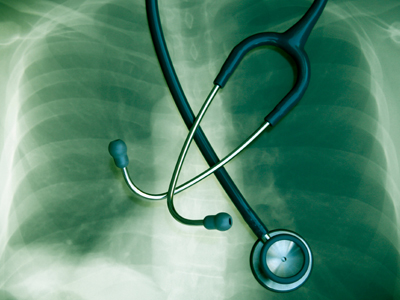
Ask the AI Tutor
Need help with Respiration 01? Ask our AI Tutor!
AI Tutor - Lucy
Connecting with Tutor...
Please wait while we establish connection

Air can enter and leave the lungs because of pressure changes.
Respiration 01
Respiration is how cells release energy from food. In KS3 Science, students explore aerobic and anaerobic respiration and how energy powers living processes.
1 .
The percentage of oxygen in the air breathed in is .......
0.03%
1%
21%
79%
That's about one fifth
2 .
The percentage of oxygen in the air breathed out is .......
4%
16%
21%
79%
It is a common misunderstanding to think that all of the oxygen that goes into the lungs is taken into the body. If it was, mouth to mouth resuscitation would not be possible
3 .
The percentage of carbon dioxide in inhaled air is how much?
0.03%
4%
21%
79%
There is only a very small percentage of carbon dioxide in the air but it is enough to create a greenhouse effect that keeps the Earth warm enough to support life. Since the middle of the twentieth century, the percentage of carbon dioxide has increased faster than ever before. This increases the greenhouse effect and causes global warming
4 .
The percentage of carbon dioxide in exhaled air is about how much?
4%
16%
21%
79%
That is significantly higher than the amount breathed in. It is a common misunderstanding that we breathe out only carbon dioxide
5 .
The percentage of which of these gases of the air breathed in remains unchanged in the air that we breathe out?
Carbon dioxide
Nitrogen
Oxygen
Water vapour
The percentage of water vapour increases in exhaled air
6 .
Which is the correct order showing the route that oxygen takes to enter the blood?
Alveoli, bronchioles, bronchi, trachea
Bronchi, bronchioles, trachea, alveoli
Trachea, alveoli, bronchi, bronchioles
Trachea, bronchi, bronchioles, alveoli
The walls of the alveoli are very thin and covered in blood capillaries. This allows the red blood cells to absorb oxygen as they pass through the lungs
7 .
Gas exchange takes place in the alveoli. Which is not true?
The alveoli have a moist surface
The alveoli have a small surface area
The alveoli have a very good blood supply
The alveoli have very thin permeable walls
They have a very large surface area which makes the absorption of oxygen and removal of carbon dioxide as efficient as possible. Smoking damages the alveoli and so getting oxygen into the blood is a lot harder
8 .
Oxygen passes from the alveoli into the blood. How is it transported?
By blood plasma
By dissolving in water
By red blood cells
By white blood cells
Haemoglobin in red blood cells joins with oxygen
9 .
Carbon dioxide passes into the alveoli from .......
arteries
blood plasma
platelets
white blood cells
The carbon dioxide is released from all living cells during cellular respiration
10 .
Air can enter and leave the lungs because .......
of pressure changes
the volume of the thorax (chest) remains the same
there is gas exchange
there is no pressure change
The animal uses its chest muscles to increase the volume of its lungs. The air inside the lungs is therefore more spread out than before, so it has a lower pressure. The higher pressure of the air outside of the lungs forces air into the lungs. The opposite is true of breathing out
**Unlimited Quizzes Await You! 🚀**
Hey there, quiz champ! 🌟 You've already tackled today's free questions.
Ready for more?
Ready for more?
🔓 Unlock UNLIMITED Quizzes and challenge yourself every day. But that's
not all...
not all...
🔥 As a Subscriber you can join our thrilling "Daily Streak" against other
quizzers. Try to win a coveted spot on our Hall of Fame Page.
quizzers. Try to win a coveted spot on our Hall of Fame Page.
Don't miss out! Join us now and keep the fun rolling. 🎉
**Unlimited Quizzes Await You! 🚀**
Hey there, quiz champ! 🌟 You've already tackled today's free questions. Ready for more?
🔓 Unlock UNLIMITED Quizzes and challenge yourself every day. But that's not all...
🔥 As a Subscriber you can join our thrilling "Daily Streak" against other quizzers. Try to win a coveted spot on our Hall of Fame Page.
Don't miss out! Join us now and keep the fun rolling. 🎉






